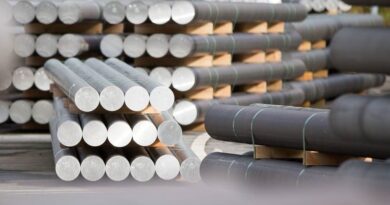Hulamin reports losses for H1 2020
Although the implementation of COVID-19 procedures facilitated operational continuity, Hulamin’s manufacturing operations were negatively impacted during the first half of 2020 by COVID-19 and the associated national lockdown in South Africa.
HULAMIN ROLLED PRODUCTS PERFORMANCE
Hulamin Rolled Products has historically generated approximately 60% – 65% of its sales in international markets. North America and Europe represent Hulamin’s largest export markets and have, in a similar manner to the South African economy, been negatively impacted by the COVID-19 pandemic.
As a result, sales volumes in Hulamin Rolled Products reduced by around 35% in the 6 months to June 2020, versus the Prior Corresponding Period. The local market was most impacted, with reductions in volumes of around 50%, whilst export sales volumes were down 23%.
The financial impact of this reduction in sales was, to a large extent, mitigated by the impact of the cost reduction actions taken in 2019, bolstered by further cost savings in the Current Period.
This, together with the positive impact of the weaker currency, resulted in Hulamin Rolled Products being profitable on an underlying trading basis, before the impact of hedge ineffectiveness.
The COVID-19 pandemic had an adverse impact, not only on operations and sales demand, but also on commodity prices and currencies.
The sharp decline in sales volumes during April 2020 to June 2020, combined with the rapid weakening of the South African Rand and the US Dollar aluminium price over the same period, resulted in excess hedging instruments negatively impacting profit (27 cents per share) and cash flows.
Earnings after tax was further negatively impacted by the non-recognition and reversal of deferred tax assets amounting to some 37 cents per share.
HULAMIN EXTRUSIONS PERFORMANCE
Hulamin Extrusions experienced depressed sales volumes due to the negative impact of the national lockdown on the domestic automotive, transport and engineering sectors, its principal markets. This was mitigated by the restructuring actions taken in 2019, which considerably reduced the cost base of the business.
LIQUIDITY AND CASH PRESERVATION
Hulamin closed 2019 with a strong balance sheet, with net debt of R272 million and a net debt to equity ratio of 11%. Due to the negative impact of COVID-19 on the group’s operating performance and the associated build-up of working capital levels, net debt increased to R609 million at 30 June 2020, with a net debt to equity ratio of 27%. Headroom in facilities amounted to approximately R500 million.
The order book has improved in quarter 3, although conditions remain uncertain.
Once the Company obtains reasonable certainty to provide specific guidance, in the form of a specific percentage or a range that does not exceed 20%, a further announcement will be made.



